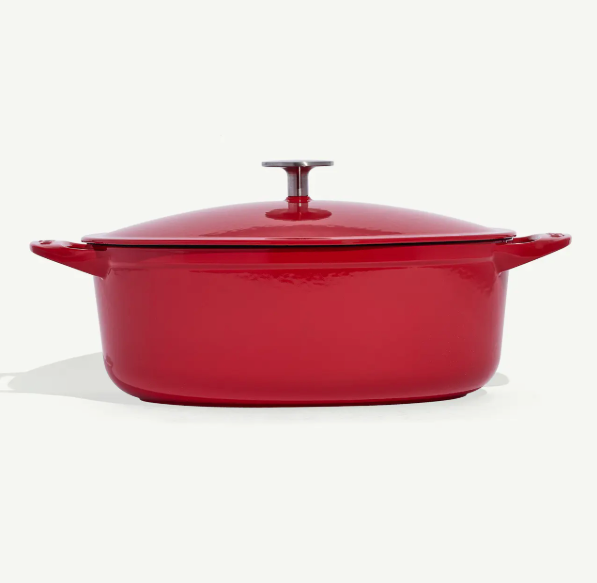
Carbon Steel or Enameled Cast Iron?
Share
Love the heat retention of cast iron but don’t want to deal with raw metal seasoning? Enameled cast iron might be on your radar. Meanwhile, carbon steel is lighter and develops its own seasoning. Here’s how these two differ so you can pick the right one.
Surface and Maintenance
Carbon steel has a raw metal surface that you season with oil, requiring a bit of care. Enameled cast iron has a porcelain enamel glaze, so there’s no seasoning necessary. You can clean enameled cast iron with soap, and it won’t rust. Carbon steel can rust if it’s left wet, so be sure to dry and oil it after use.
Weight and Handling
Carbon steel is lighter. A 12-inch carbon steel skillet might be around 4-5 lbs, whereas a 12-inch enameled cast iron skillet often weighs 6-8 lbs or more. The heavier weight can be good for heat retention but is less comfortable to handle for some tasks.
Heat Performance
Carbon steel heats up quickly and is great for searing, stir-frying, and sautéing. Enameled cast iron is slower to heat but excels at steady, gentle cooking and long braises. You can sear in it too, but it might stick more if you don’t use enough oil. Many enameled pans cap at around 500°F, so they may not tolerate very high heat or broilers the same way a bare-metal pan does.
Durability
Carbon steel is extremely tough. If the seasoning gets damaged, you can scrub down to bare metal and re-season. Enameled cast iron is chip-resistant but not chip-proof. Once the enamel chips, it can expose the raw cast iron underneath, leading to rust spots.
Conclusion
If you’d rather skip the seasoning process and enjoy the ease of a rust-proof surface, enameled cast iron is appealing. If you want a lighter, more responsive skillet that can develop a slick, natural patina, carbon steel is ideal. Both can deliver excellent results, but they suit slightly different cooking styles.